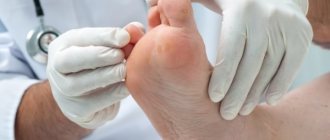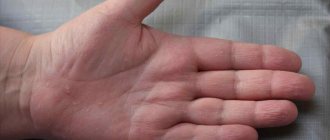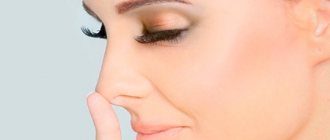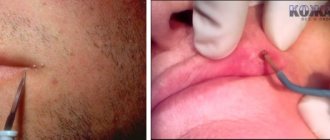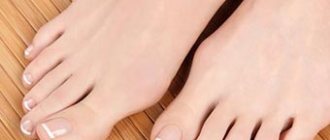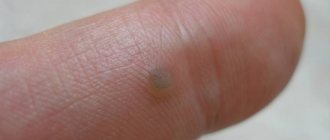Skin pathologies in the form of benign tumor formations are a common occurrence. They occur in people at different stages of life and for different reasons. It will not be difficult for an experienced dermatologist to distinguish a wart from a callus. A person encountering skin growths for the first time needs to know the distinctive signs of the formations.
What is a wart
A wart is a small growth that is hard to the touch and can appear on the skin and mucous membranes. In most cases, this is a benign neoplasm, the appearance of which is provoked by the human papillomavirus. There are about a hundred of its varieties. Scientists have studied them well and identified three groups of strains to determine the risks of infection. The first includes those that have low risks of oncogenicity, the second – medium, and the third – high. The virus does not activate immediately when it enters the human body. First, it experiences an incubation period, and then falls into a latent form and waits in the wings. Warts appear when immunity decreases.
The difference between a wart and other neoplasms
When a growth appears on the palm, some people have difficulty recognizing such a growth. Some immediately identify it with calluses.
But you can recognize a wart by its signs:
- Its size does not exceed one centimeter and it has a round shape.
- The color is identical to the shade of the skin.
- Newly emerging growths have a smooth surface, while old ones are distinguished by horny layers.
- The place where the wart appeared does not hurt. But when it grows into the epidermis, then discomfort appears.
- A growing wart may become covered with black dots (vessels with blood clots).
- The skin pattern is not visible on the neoplasm, but after its removal it is restored.
On the hand, a wart of a compacted structure may appear one or several small growths at once. Moreover, other areas of the body may have a completely clean surface.
Flat, round growths can appear in teenagers and young adults between the ages of ten and thirty. If they are large, they require removal, while small ones may disappear on their own over time.
Causes of warts
Anyone can become infected with the human papillomavirus. The most common route of transmission is sexual contact. The risks of infection increase if a person often changes sexual partners and has relationships with several people at once. You can also become infected by shaking hands with a virus carrier or by using shared bath amenities. Those who often visit public baths, swimming pools, and saunas are also at risk. Going to beauty salons to get a manicure and pedicure can also be dangerous. If sanitary and hygienic rules are not observed well enough in such places, the risk of infection increases significantly.
The virus enters the human body through microscopic cracks located on the skin or mucous membranes. After completion of the incubation period, it can be activated only at the moment of a sharp decrease in immunity.
Factors that can provoke this condition are:
- overwork;
- long-term use of antibiotics, steroid drugs;
- hormonal imbalances;
- exacerbation of chronic diseases;
- constant stress;
- bad ecology;
- poor nutrition;
- sedentary lifestyle.
The localization of the growth, its type, shape and size depend on what strain the person was infected with. Some of them are harmless growths, and there are those that can cause cancer.
Why do plantar warts occur?
The photo shows a plantar wart
Plantar warts have the same origin as papillomas, condylomas - papillomavirus. This pathogen spreads among people through contact and household contact. Infection occurs by shaking hands, kissing, using common household items, and walking barefoot in public places.
Classification and localization of warts
There are several types of warts. Classifying them, doctors distinguish the following varieties:
- Vulgar warts are dense, dry growths that resemble the head of a pin or a pea. On top they have a cap with an uneven fleecy surface. Onions most often grow on clusters and can merge into one large plaque. The formation of such papillomas is not accompanied by pain. The causative agent of the infection is strains with low oncogenic risks.
- Flat warts are irregularly shaped nodules. Most often they grow on the back of the hands of teenagers, so they have a second name - juvenile. They appear where there has been irritation or a cut on the skin. The causative agent of the infection is HPV 14, 15, 27 strains.
- Genital warts are warts shaped like pyramids. Single elements very quickly become overgrown with new growths. Merging, papillomas form growths that look like cauliflower inflorescences. They are soft and velvety to the touch. Pink or light brown in color. Most often they appear on the genitals (on the skin and mucous membranes), around the anus. When they grow, they are able to penetrate into organs (vagina, urethra, sphincter). Very often they degenerate into malignant neoplasms.
- Plantar warts are growths that most often appear in areas of pressure from shoes. Those who sweat a lot are at risk. To the touch, such neoplasms are very dense. Their top layer is keratinized. Growth is accompanied by severe pain.
Externally, plantar warts are very similar to calluses. Only a dermatologist can distinguish them from papillomas by external signs. It is to him that you need to turn to for help if the growth of a neoplasm has caused temporary loss of ability to work.
What is a callus
A callus is a growth, a dry area of skin that has a compacted structure. Appears as a result of prolonged friction or strong pressure on the same point. The reason for the formation of such conditions is wearing tight, uncomfortable shoes, lack of ventilation of the feet, and excessive sweating. Such a callus may appear on the hand due to monotonous work. You can often see calluses on the fingers of people who write with a pen or pencil. The callus always has clear contours and a rounded shape.
Wet callus
There are only two types of calluses:
- wet - looks like a bubble filled with a clear liquid. Such formations appear on the palms after working with heavy tools without gloves. After opening such a growth, the wound heals very quickly. This is explained by the fact that the liquid accumulates only under the top layer and deep damage does not occur. If a wet callus forms where blood vessels are located just under the dermis, the blister fills with blood. Blood calluses are a rare occurrence, but they need to be treated more carefully due to the high risk of developing a bacterial infection;
- dry - looks like normal skin thickening. These calluses appear on the fingers, toes, and soles of the feet. They differ from warts in that they have a cone-shaped rod in the center. When pressure is applied to the callus, its sharp part presses on the deeper layers of the skin, irritating the nerve endings located in them, so the person experiences severe pain at this moment. If such a callus is not treated, a crack may appear instead over time. It will become an open gate for bacterial or viral infection to enter.
Symptoms and causes of corns
A corn is a collection of keratinized cells on the surface of the foot. The formations are usually localized near the fingers and are accompanied by a burning sensation.
Corns are usually located near the fingers
A number of reasons contribute to the appearance of growths:
- Wrong choice of shoes. This problem is often encountered by women who wear high-heeled shoes. Corns occur due to uneven distribution of load between different parts of the foot. When wearing high-heeled shoes for a long time, the blood supply to the lower extremities is impaired, and certain areas of the skin die. Often the problem is diagnosed in a child due to parents choosing shoes that are “not the right size.”
- Diabetes. Benign growths are formed due to impaired metabolism.
- Pathologies of internal organs. When the digestive system malfunctions, corns appear on the right leg. Damage to the left limb indicates cardiovascular disease. Seals on the heels and toes signal endocrine problems and intestinal pathologies.
- Excess weight, which causes increased stress on the limbs.
Excess weight contributes to the appearance of corns on the feet
- Deformed foot or bowed big toe. With such disorders, the load on the legs is distributed unevenly. In places of maximum contact of the foot with the shoe, dry calluses form.
- Neurological disorders.
Diagnostics
Some types of warts and calluses are difficult to distinguish externally, but a dermatologist can make a preliminary diagnosis after the first examination.
It is guided by the following features and differences:
| Characteristic symptoms | Corn | Wart |
| Mechanisms of occurrence | Tissue death after prolonged friction or pressure on one area of the skin. | Virus infection. It penetrates through microscopic cracks, infects cells, inserts its DNA into their nucleus and starts the process of uncontrolled division. As a result, a growth appears. |
| Circulation | Due to constant pressure, blood circulation slows down or stops altogether. This is why the skin thickens and rough areas appear. | The vital activity of the virus does not affect blood circulation in any way, so if the wart is damaged, signs of inflammation (redness of the skin, swelling) or bleeding may appear. |
| Borders | Without clear contours, blurry. | The contours are clear, shaped like an irregular circle. |
| Color | White, with a yellow tint. | Grey, yellow or brown. |
| Soreness | When you press the growth with your finger, there is no pain, it occurs only when wearing shoes. | When pressed with a finger, a strong sharp pain is felt. |
| Treatment methods | Local therapy. | Deletion only. |
If a doctor suspects that a plantar wart is growing in a patient, he can confirm his suspicions by ordering a number of laboratory tests:
- Detailed blood and urine analysis. They allow you to assess general health indicators.
- PCR (polymerase chain reaction). It can be used to confirm or refute the presence of HPV in the blood.
- Digest test - allows you to recognize papilloma and determine the strain of the virus.
- Scraping of the growth tissue and further cytological examination.
- Ultrasound. Allows you to assess how deep the callus core or wart roots have grown.
The results obtained make it possible to establish the exact cause of the growth of the compaction and develop treatment tactics.
Treatment of warts
Finding out what is growing on the body (a callus or a wart) is necessary to prescribe the correct treatment. If the cause of the tumor is the activity of the papillomavirus, the patient will be prescribed drug treatment and removal of the wart.
This can be done in different ways:
- cryodestruction;
- electrocoagulation;
- laser therapy;
- radio wave knife;
- surgically;
- exposure to a chemical reagent.
Conservative treatment is aimed at suppressing the virus and strengthening the immune system. The patient is prescribed antiviral drugs, immunocorrective agents, and vitamin complexes. To prevent relapses, doctors recommend completely reconsidering your life, learning to eat right, playing sports, giving up bad habits and choosing one sexual partner for a relationship. The infected person must understand that it will not be possible to kill the virus with drugs, so he will have to monitor his immune system for the rest of his life. A sharp decrease in it can provoke relapses or give impetus to the development of malignancy processes.
If a patient is diagnosed with a callus, the doctor will advise changing shoes, taking hot baths (steaming the callus), using pumice, and then lubricating the damaged area with a moisturizer. If a bacterial component is attached, antibiotics and antiseptic ointments are prescribed.
Surgical and hardware treatment
Surgical and hardware methods for removing warts include:
- Excision with liquid nitrogen - wart tissues die due to exposure to low temperatures.
- Removal of tumors with laser.
- Electrocoagulation - the growth is treated with electric current.
- Surgical intervention - this method is acceptable when a large area of the palm is affected. The operation is performed under local anesthesia, which allows you to painlessly remove the growth and apply cosmetic stitches.
Folk remedies for the treatment of warts
Traditional medicine has remedies that can completely replace traditional treatment regimens. Warts can be removed using celandine juice, garlic and potatoes. Berry fruit drinks, mixtures of dried apricots, prunes, walnuts, raisins (all ground in a meat grinder and seasoned with honey), and fish oil will help strengthen the immune system. But such recipes can only be used if there is one hundred percent certainty that the infection with the human papillomavirus was caused by a non-oncogenic strain. Therefore, if any wart appears on the body, you must first meet with a dermatologist. After examining him, conduct a series of diagnostic examinations, discuss their results with a specialist, and then decide on the choice of treatment.
Complications
Calluses are a mild pathology. Their treatment can be done at home, but such skin defects must be treated with extreme caution. If you ignore the problem or treat thickened skin incorrectly, there is a risk of infection, which can cause systemic blood poisoning.
Papillomas and warts in themselves are not dangerous, but if their growth was provoked by infection with a strain of high oncogenic risk, an ordinary wart can degenerate into melanoma (skin cancer) at any time. It is possible to improve forecasts only in the early stages of degeneration. Therefore, it is so important to be able to distinguish calluses from warts and promptly treat and remove any growths.
How to distinguish growths from each other
The first thing a modern person does when he feels the manifestations of a disease is to go on the Internet to look at photos of similar symptoms. If it is impossible to see a specialist if lumps and growths appear on the skin of the feet or palms, you can determine the nature of the damage with similar symptoms at home. For diagnostic purposes, the affected skin is steamed in hot water with the addition of herbal decoctions, soda, salt or antibacterial soap. After steaming, carefully remove the dead skin layer. Visually, the viral lesion presents multiple pinpoint hemorrhages with black dots throughout the defect area, extending into the tissue. The surface of the callus will remain light and slightly lumpy with no signs of blood flow.
Another way to recognize whether there is a callus or a wart on the foot is by palpating the tissue around the growth. When pressing near the location of the problem, the pain will be absent in the presence of a corn (or intensify, which indicates that the patient has a plantar wart). This is due to the nature of tissue damage: the callus consists of dead cells that lack nerve endings and blood circulation. Plantar warts do not interfere with blood circulation in the affected tissues; cells and nerve endings, although affected by viruses, remain alive. The pain syndrome when pressed is significantly pronounced.
Another sign that helps to distinguish between two similar defects is the degree of its expression above the surface of the skin. The wart is always flat, the callus has a sharp apex.
Disease prevention
The priority area of prevention is careful adherence to personal hygiene rules. It is necessary to bring your own replacement shoes in public swimming pools, baths and saunas. You cannot use other people’s bath accessories (washcloths, towels).
You should be careful when purchasing shoes. Preference should be given to those made from natural materials that allow the skin to breathe. If you have excessive sweating, you must use special cosmetics designed for foot care.
Doctors recommend avoiding close contact with people who have warts growing on their skin, and never touching their things. If your sexual partner has warts on the body or genitals, it is imperative to use barrier contraception during sex. Strengthening the immune system plays an important role in the prevention of warts. To implement this principle, you need to eat right, lead an active lifestyle, harden yourself, and treat any diseases in a timely manner.
